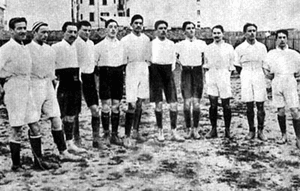
Every country fits into a stereotype when it comes to their football. The Germans are organised for example, whilst the Spanish play with flair, and the Portuguese – according to Ruud Gullit at least – play ‘sexy’ football. The Italians have long been known for their defensive strength and organisation, building from the back and keeping a clean sheet as a first priority before trying to score second.
It is a method of play that has served the Azzurri very well indeed over the years, making them one of the most successful clubs in world football. They have appeared in six World Cup finals, winning four of them, and a further two semi-finals of the same competition. They’ve enjoyed less success in the European Championship, but they’ve still won it once and reached the final three times in total, though, so they’re no slacks there either.
They were also the first team to successfully defend their World Cup title, which they did in 1938 having won it three years before. The outbreak of the Second World War meant that they retained the title for sixteen years – a record, although perhaps with an unfair advantage.
Introduction to Italian Football
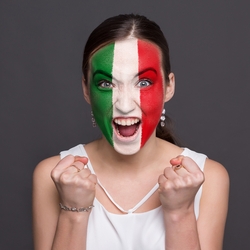 There’s an argument that the top-flight division in Italy is one of the most competitive leagues in Europe. Serie A has been won by a total of sixteen different teams during its existence, though it’s certainly true to say it has been dominated by one team in particular in recent times. From 2000 to 2019 Juventus won twelve of the seventeen championships on offer, although their 2004-2005 and 2005-2006 titles were later taken away from them due to match-fixing allegations.
There’s an argument that the top-flight division in Italy is one of the most competitive leagues in Europe. Serie A has been won by a total of sixteen different teams during its existence, though it’s certainly true to say it has been dominated by one team in particular in recent times. From 2000 to 2019 Juventus won twelve of the seventeen championships on offer, although their 2004-2005 and 2005-2006 titles were later taken away from them due to match-fixing allegations.
Despite the relative dominance of Juventus in recent times, Italian football has been blessed by the presence of a number of excellent, strong teams in its top-flight. Internazionale, better known to most as Inter Milan, and their neighbours AC Milan have both competed at the highest level of European football. Likewise teams such as Roma, Lazio, Napoli and Sampdoria are well-known clubs throughout the world thanks to their exploits on the domestic and European stage.
In the 1960s the European Cup, now better known as the Champions League, was won by Italian teams four times out of the ten times the competition ran. AC Milan are the most successful Italian club in that particular competition, winning the trophy seven times and losing in the final on a further four occasions. Inter have won it three times and Juventus twice. Fiorentina, Roma and Sampdoria have all been losing finalists. Juve and Inter have both won the UEFA Cup, or the Europa League to give it its modern day moniker, as have Napoli and Parma. Fiorentina, Roma, Torino and Lazio have all made it to the final before stumbling at the final hurdle.
Here is where you can learn about the different types of stadium on offer in Italy as well as the some more information on the history of the national team. We’ll also tell you about how football made its way to Italy in the first place and we’ll give you some information about the league set-up in the land of Vespas, pasta and the leaning tower of Pisa.
Italian Stadiums
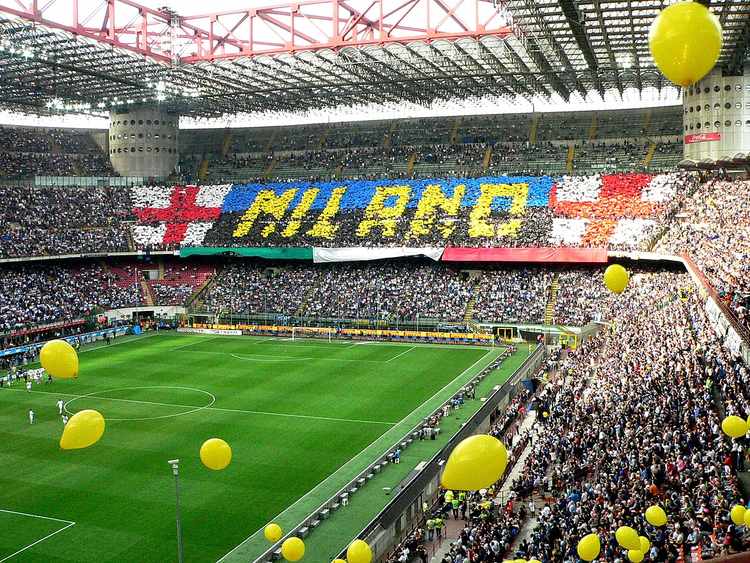
It is fitting that the land of the colosseum offers some truly spectacular stadiums. The two Milan clubs, AC and Inter, share a home in the Stadio Giuseppe Meazza, better known to most as the San Siro. It is the largest stadium in the country and is capable of housing over 80,000 supporters. The Stadio Olympico in Rome isn’t too far behind, with a capacity of 20,000+.
As football is such a popular sport in Italy it is perhaps unsurprising that even the so called ‘lower’ teams still have impressively large stadiums. More than half of the main grounds around the country have a capacity of over 20,000, with plenty more coming in at over 10,000. Most of them are built with the specific aim of taking advantage of Italy’s amazing climate, too, with roofs few and far between on Italian grounds.
Italian Leagues
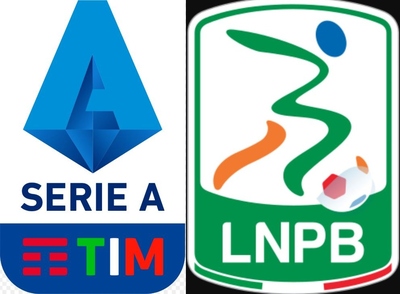 The top two leagues in Italy are called Serie A and Serie B. The former is controlled by the Lega Nazionale Professionisti Serie A, which is also in charge of the main domestic cups in the country.
The top two leagues in Italy are called Serie A and Serie B. The former is controlled by the Lega Nazionale Professionisti Serie A, which is also in charge of the main domestic cups in the country.
Serve B, meanwhile, is controlled by the imaginatively named Lega Nazionale Professionisti B. Both leagues used to come under the jurisdiction of the Lega Nazionale Professionisti, or Lega Calcio, but the two leagues split in 2010 and that ceased to exist.
All of the leagues and divisions in Italy are interconnected, operating a system of promotion and relegation from and to each division. That means that, in theory at least, the lowliest club in the entire Italian footballing pyramid could make its way to the top and become the Italian champions.
There are nearly 600 divisions in Italy, featuring over 3000 teams across them. Mostly, though, you’ll be interested in the twenty teams in Serie A and the twenty-two in Serie B.
Italy National Team
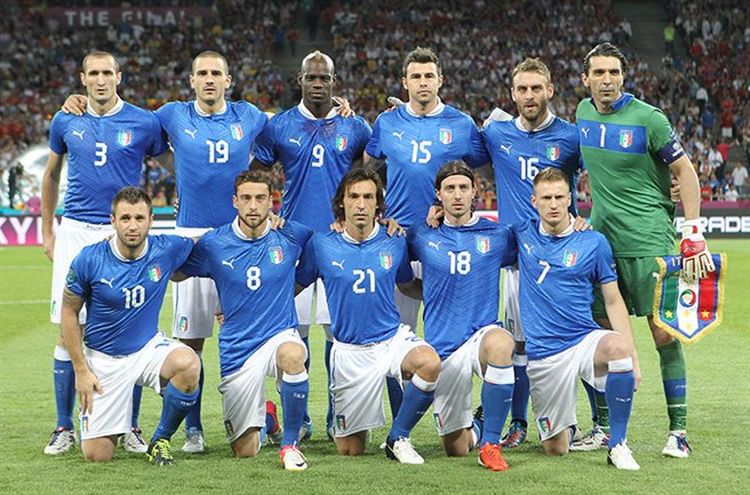
The Federazione Italiana Giuoco Calcio, or Italian Football Federation, is in charge of controlling the Italian national side. As well as their four World Cups and one European Championship mentioned earlier, the Azzurri have also won one Summer Olympics tournament. It was held in Berlin in 1936 and came in the middle of a hat-trick of tournament wins for the Italians, seeing as though they had already won the World Cup two years before and would go on to win the next World Cup two years later.
An interesting fact about the Italian national side is that to begin with players wore white tops and the shorts from the club side that each player played for. It wasn’t until three games in to the national side’s existence that they started to wear the Savoy Blue traditionally associated with the Italian royal dynasty. Italy’s first ever international game came in 1910 when they took on France and beat them 6-2 with a unique 2-3-5 formation. Their prize was cigarette packets thrown to them by spectators in the crowd.
Key Stats
| Italy National Team Statistics | |
|---|---|
| Year Formed | 1910 |
| Home Stadium | Various Throughout Italy |
| Stadium Capacity | N/A |
| Major Honours | World Cup (1934, 1938, 1982, 2006), European Championship (1968) |
| Current Manager | Roberto Mancini |
| Top Scorer | Luigi Riva (35) |
| Most Caps | Gianluigi Buffon (176) |
| Best Performance at World Cup | Winners (1934, 1938, 1982, 2006) |
| Best Performance at European Championships | Winners (1968) |
| Kit Colours | Blue and White (Home), White and Blue (Away) |
History Of Football In Italy
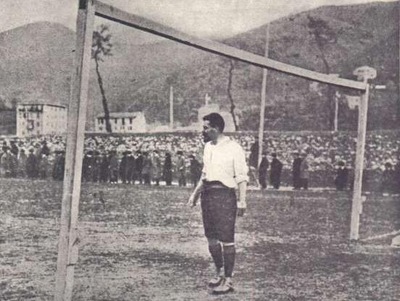 Given that football in the modern sense was pretty much invented in England, it’s no surprise that the game as we know it was introduced to the country by Englishmen.
Given that football in the modern sense was pretty much invented in England, it’s no surprise that the game as we know it was introduced to the country by Englishmen.
The Genoa Cricket and Football Club was formed in 1893 and was initially a cricket club for the English in Italy. In 1896 James Richardson Spensley came to Genoa with a football and introduced the game to the club, simultaneously becoming Genoa’s first manager.
As is often the case with origin stories, however, there is some debate over whether that was in fact the first time that association football was played in Italy.
In 1887 a merchant named Edoardo Bosio, who had been visiting England as part of the textile industry, returned to his homeland and spread football throughout his city of Turin. Certainly there is evidence that the Torino Football and Cricket Club was formed in that year, casting some doubt on Genoa as the first football club in Italy.
